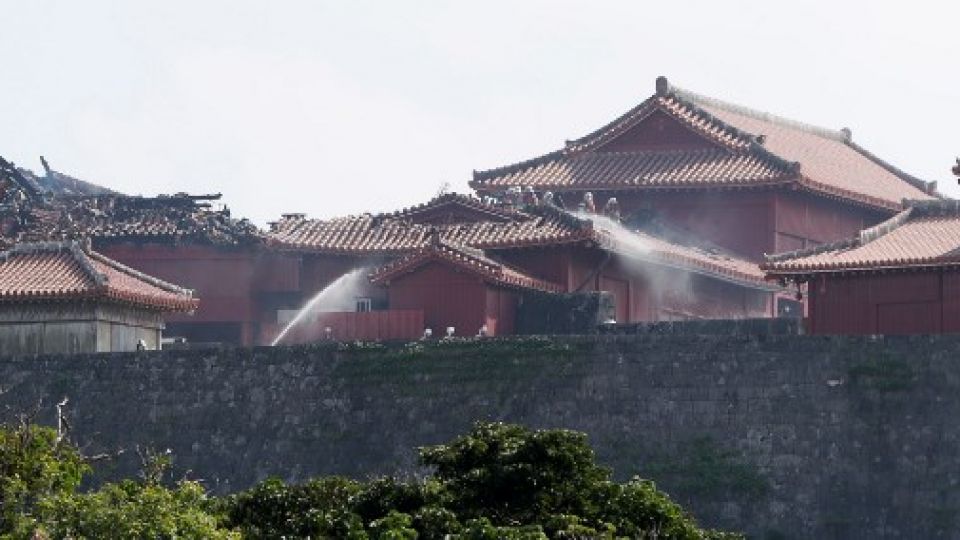November 1, 2019
The fires took place at Shuri Castle on Okinawa.
The results of 30 years of efforts to restore Shuri Castle were lost as a massive fire destroyed the castle in Naha early Thursday.
Shuri Castle was a symbol of the distinctive Ryukyu culture that incorporated elements of the cultures of Japan and China. It had Chinese palace-style architecture with a beautiful vermilion tiled roof, along with a karahafu curved gable typically found in Japanese castles.
The castle’s main hall was designated as a national treasure before World War II, but was destroyed during the Battle of Okinawa. Three decades of restoration work on the castle had just been completed in January.
“Shuri Castle represents the history of Okinawa. Many lives and cultural properties were lost in the war, and Shuri Castle was the most notable example,” said Kurayoshi Takara, a former vice governor of Okinawa Prefecture and professor emeritus of the University of the Ryukyus. Takara was involved in the restoration project from its initial stage.
The reconstruction of the main hall started in 1989 based on photographs taken before the war and ancient documents. It was completed in 1992, opening as Shurijo Castle Park.
Reconstruction of the whole area was completed in January this year. In fiscal 2017, about 2.85 million tourists visited the park, and the total number of visitors reached 60 million in December last year, making it one of Okinawa’s representative tourist spots.
“We had just completed the restoration with the wisdom of researchers, shrine carpenters and craftspeople with the aim of restoring Okinawa’s history, but it was lost again,” Takara said.


